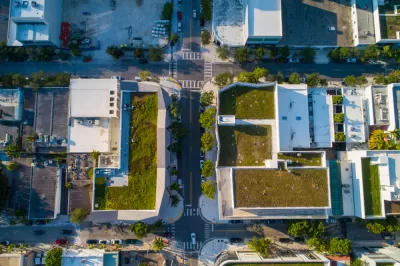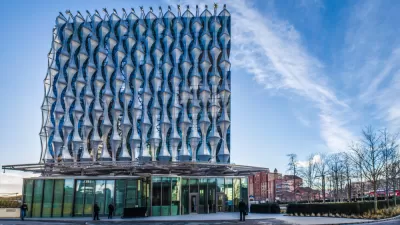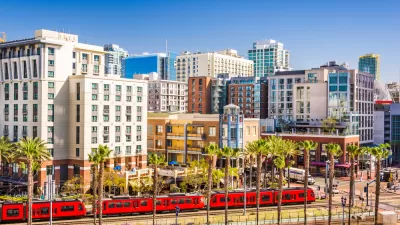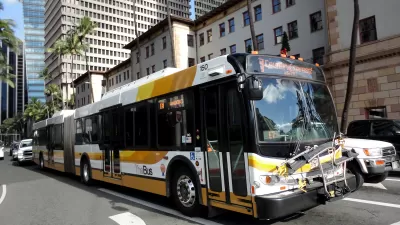Cities around the world are demonstrating that net zero carbon buildings—including net zero low-income housing—can be built cost effectively.

Cities with aggressive climate standards such as net zero or 100% renewable energy by 2050 are running into roadblocks. Achieving these goals will require strong building energy codes and ending the use of fossil fuels in buildings for space and water heating and cooking. We're starting to see that neither the natural gas utilities nor the real estate industry is going to sit by quietly as cities and states enforce stronger building codes and ban natural gas infrastructure in new construction.
It just happened in Massachusetts—a state considered a leader on energy efficiency and climate change. In November 2019, the town of Brookline passed a bylaw banning natural gas infrastructure for space and water heating in new construction and major renovations. While Brookline was the first in Massachusetts, more than 41 cities nationally have codes that eliminate or minimize natural gas in buildings.
The Home Builders and Remodelers Association of Massachusetts was a vocal critic of the bylaw, as was the American Gas Association and the American Petroleum Institute, which threatened court challenges of the law. It passed anyway but was stopped by state law.
In July 2020, Massachusetts Attorney General Maura Healey reluctantly ruled that Brookline's bylaw prohibiting installation of oil and gas lines in new and substantially renovated buildings violates state preemption law—meaning that cities and towns cannot pass energy requirements stronger than the state's code. Massachusetts is one several states in which cities and towns cannot impose stricter building energy codes than the state.
Meanwhile, the legislature was putting together a landmark climate bill that would require the state to achieve net zero greenhouse gas emissions by 2050 with interim goals each decade (e.g., reduce emissions by 50 percent below 1990 levels by 2030). The net zero goal would be achieved by increasing energy-efficiency requirements in appliances and increased reliance on offshore wind and solar power. A key provision would allow cities and towns to adopt net zero codes—meaning that a building is very energy efficient and completely powered by renewable energy produced either on- or off-site. Both the NAIOP (National Association of Industrial and Office Properties) Massachusetts and the Greater Boston Real Estate Board, came out against the legislation, on the grounds that it would increase construction costs.
Governor Charlie Baker listened. The legislature passed the bill on January 4th, but Gov. Baker vetoed it on the 14th, saying, "One of my big concerns is I've gotten a lot of incoming [sic] from a lot of folks who are in the building and home construction business who have said that certain pieces of this bill, which remember I can't amend and send back, literally may just stop in its tracks any housing development in the commonwealth and those words get my attention."
To his credit, Baker has supported strong climate legislation, and is a leader in a recent major multi-state effort, the Transportation and Climate Initiative Program (TCI-P), which will employ a "cap and invest" program to reduce motor vehicle pollution by at least 26 percent by 2032. Leaders of both houses of the Massachusetts Legislature are committed to reintroducing the bill in the next session, and, with negotiation, some form of the bill will pass. But if the argument that construction costs are too high to justify aggressive building efficiency standards can prevail in Massachusetts, we need to make a stronger case if similar policies are to pass elsewhere.
While it's true that net zero construction currently can cost 5-10 percent more than standard construction, these buildings cost considerably less to heat and cool. Researchers are demonstrating how technological design of energy systems in the early design phase reduces costs. The U.S. Department of Energy's National Renewable Energy Lab came to the same conclusion in 2012. As the standard becomes more common, the cost differential goes down. A study by the Rocky Mountain Institute estimates that the cost of building to the standard will decline by half by 2050. We won't get to these efficiencies without building codes requiring the standard.
California illustrates the potential savings to consumers. The state now requires that all new residential construction bet zero net energy and commercial by 2030. In addition, half of all commercial buildings must be retrofitted to the standard by 2030. Since then, several California cities have become leaders in the field. For residential construction, the standard adds $40 to a monthly mortgage payment, which is offset by an $80 per month return on heating, cooling, and lighting over a 30-year term.
The net zero standard is an environmental justice standard. Low-income families pay a higher percentage of their income on home energy. This energy burden can be as much as three times higher than the average household. Richmond, California, Portland, Oregon, San Francisco, New York State and many other places are demonstrating that building new and retrofitting existing low-income housing to net zero standards is possible. It not only reduces energy burden, but reduces indoor air pollution, a demonstrated public health threat, by eliminating gas appliances.
The horse has left the barn. Leading cities throughout the world are committing to net zero carbon buildings and demonstrating that even low-income housing can be built to this standard cost effectively.
Extractive industries are often seen as the prime obstacle to good policy. But it's an open secret that developers wield immense power the politics of most cities and states. When it comes to urgent climate policy, their short-term interests must not be allowed to call the tune.

Planetizen Federal Action Tracker
A weekly monitor of how Trump’s orders and actions are impacting planners and planning in America.

Map: Where Senate Republicans Want to Sell Your Public Lands
For public land advocates, the Senate Republicans’ proposal to sell millions of acres of public land in the West is “the biggest fight of their careers.”

Restaurant Patios Were a Pandemic Win — Why Were They so Hard to Keep?
Social distancing requirements and changes in travel patterns prompted cities to pilot new uses for street and sidewalk space. Then it got complicated.

Platform Pilsner: Vancouver Transit Agency Releases... a Beer?
TransLink will receive a portion of every sale of the four-pack.

Toronto Weighs Cheaper Transit, Parking Hikes for Major Events
Special event rates would take effect during large festivals, sports games and concerts to ‘discourage driving, manage congestion and free up space for transit.”

Berlin to Consider Car-Free Zone Larger Than Manhattan
The area bound by the 22-mile Ringbahn would still allow 12 uses of a private automobile per year per person, and several other exemptions.
Urban Design for Planners 1: Software Tools
This six-course series explores essential urban design concepts using open source software and equips planners with the tools they need to participate fully in the urban design process.
Planning for Universal Design
Learn the tools for implementing Universal Design in planning regulations.
Heyer Gruel & Associates PA
JM Goldson LLC
Custer County Colorado
City of Camden Redevelopment Agency
City of Astoria
Transportation Research & Education Center (TREC) at Portland State University
Camden Redevelopment Agency
City of Claremont
Municipality of Princeton (NJ)






























